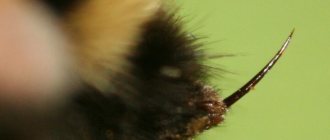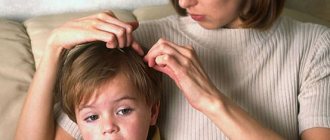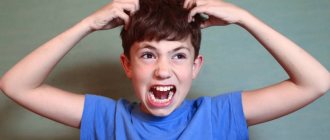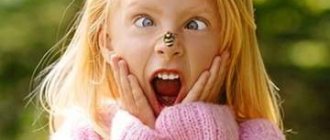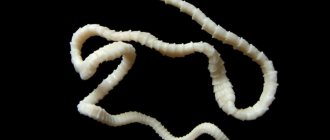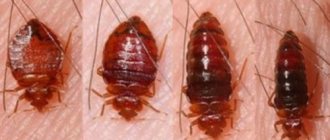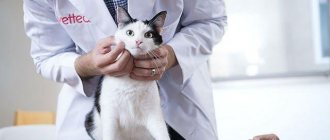Where do lice come from?
The main route of spread of lice is contact. Lice infection occurs through close contact between people, which often occurs in children's groups, in public transport, at public events, and when using other people's combs, hats, clothes and underwear.
Unfavorable sanitary and hygienic conditions are the main factor in the occurrence of head lice. Body louse is often a companion to unsanitary conditions. However, the disease also occurs in clean people. Outbreaks of pediculosis are recorded constantly. The peak of diseases is observed in the fall, when adults and children return from vacation (pioneer camps, resorts).
Pediculosis in our country today is an acute problem. Up to 35% of all cases of the disease are common among people 15 - 24 years old. 27% of cases are children under 14 years of age. 16% of cases are adults 35 - 60 years old. Children from orphanages, boarding schools and preschool institutions often suffer from pediculosis.
Body lice is more often reported among tramps, and pubic lice is more common among young people. Infants get lice from their mother.
Rice. 2. Lice infection occurs through close contact between people and clothing.
Rice. 3. A companion to unsanitary conditions is always lice.
Sources of lice in children
The most important risk factor for lice in children is being in a group of children. Kindergarten, school, development center, clubs, health camp, hospital, swimming pool - any place where there are many children in a small area at the same time becomes potentially dangerous. Children love to communicate, play together, and hug, fight, roll around, and touch their heads. At the same time, it is very easy for lice to move from one head to another. The louse cannot jump or fly, but moves quite quickly. Can cover approximately 50 cm on any surface in a minute. You can simply shake off the parasite onto another person. Therefore, picking up lice while playing in close contact is easier than ever.
Another factor that increases the risk of lice and nits is that children like to exchange things. These can be hats, combs, hair clips, and other hair accessories. Girls are primarily at risk in this risk group.
A modern reason for the easy transmission of lice in children is the use of gadgets. Children do not take their eyes off the screens of smartphones and tablets, touching their heads for a long time. During which time the lice have time to crawl from one child to another.
Even if the child is still small and does not go to children's institutions, he can pick up lice, for example, on the playground. Lice can stay in the sandbox for up to 4 days, without gaining access to blood, but maintaining viability. So, if a baby likes to roll in the sand, he runs the risk of picking up parasites there.
Lice also appear when visiting a hairdresser with a low level of hygiene. If instruments are not sterilized after each client, insects or nits may remain on them. They can also remain on the headrest or back of the chair, from where they move onto the head.
Even a bathhouse, sauna or swimming pool can become a place where a child gets lice. They are not afraid of water and live in it for some time.
So, the main ways in which lice appear in children are:
- close contact during games and communication;
- exchange of personal belongings;
- visiting a hairdresser;
- in sandboxes and playgrounds;
- in swimming pools, baths.
Lately, the number of head lice outbreaks has been decreasing. This is associated with an increase in hygiene levels. But at the same time, in large populated areas, where families live with different ideas about hygiene and the need to treat head lice, lice remain a problem. In a group, one child with parasites is enough for him to constantly infect his classmates.
What do lice look like? Microbiology of parasites
There are about 200 species of lice common in nature. Insects that live on the human body belong to the Pediculidae family, order Pseudorhynchota. Each species parasitizes only on a specific host and does not spread to others. Head, pubic and body louse are of epidemic importance for humans.
Insects are carriers of some infectious diseases (typhus and relapsing fever, trench fever).
Lice feed on the blood of the mammals they live on. At one time, one individual is sucked out up to 0.5 ml. blood. Starvation for 1 - 2 days leads to insect death.
When sucking blood, lice inject saliva into the thickness of the skin. The saliva secreted by the bean-shaped glands of parasites has an irritating effect, as a result of which inflammatory foci appear on the skin in the form of dense infiltrates, accompanied by itching, often very severe. Scratching areas are often infected with streptococci and staphylococci, which causes impetigo, folliculitis and boils.
Rice. 4. At one time, lice are sucked out up to 0.5 ml. blood. Male parasites are 3 times smaller.
Lice die at temperatures above 45°C and below 0°C. If the ambient temperature drops gradually and not much, the insects fall into a state of suspended animation, in which they can remain without food for several weeks.
Lice lay eggs in the folds of clothing and on hair in areas of greatest growth. The eggs in the cocoon are called nits.
Each type of parasite is characterized not only by a specific habitat, but also by the intensity of egg laying, feeding frequency, size and life expectancy.
Lice can be clearly seen under a microscope. In addition to the insects themselves, you can see 6 legs, a cephalothorax, body segments, an abdomen and antennae.
Rice. 5. The photo shows insects under a microscope. On the left is pubic louse, on the right is head louse.
Rice. 6. Head and body lice have an elongated shape (photo on the left). Pubic lice have a short body, which makes them look like crabs (photo on the right).
How dangerous are lice?
Body louse is more dangerous than head louse. This insect morphotype serves as a carrier of typhus, a group of infectious diseases caused by rickettsia bacteria, characterized by a specific rash, damage to the cardiovascular and nervous systems, and fever.
Linen lice carry the bacterium Bartonella quintana. This microorganism causes a disease called Volyn fever, characterized by repeated attacks of fever with chills, pain in the bones, muscles, and rash on the body.
Head lice carry relapsing fever pathogens, spirochetes from the genus Borrelia. Body louse can also carry these microorganisms. The disease manifests itself as alternating attacks of fever with periods of normal body temperature, accompanied by rashes, damage to the nervous, respiratory, and cardiovascular systems, and an enlarged spleen and liver.
Structure and nutrition of parasites
The mouthparts of lice are capable of piercing the skin and sucking blood. The soft tube-trunk of the parasite is equipped with piercing needles, with the help of which the skin is pierced. The proboscis penetrates deep into the skin using rotational movements. The teeth of the terminal corolla cut through the stratum corneum of the epidermis. In the area of the dermal layer, flexible stylets of the proboscis search for blood vessels. The wall of the discovered vessel is cut through the teeth of the stylets and the proboscis is inserted into the vessel.
Next, the insect begins bloodsucking, during which the pharyngeal pump contracts several times per second. Blood sucking lasts several seconds. During this time, about 1 mg of blood enters the female’s stomach. Thanks to the production of anticoagulant secretion, the blood does not clot. The louse feeds only on sedentary areas of the body.
Parasites often have no eyes, or resemble 2 black dots. The mouthparts lack palps. Antennas are short. The tibiae of the legs are short, the tarsi are single-segmented, the forelegs end in a sickle-shaped claw, thanks to which the louse is firmly held on the hair and body of the owner.
Rice. 7. The photo shows a head louse under a microscope (top view).
Rice. 8. The photo shows lice under a microscope.
Rice. 9. The head of the parasite is separated from the chest. The body segments form a monolith.
Rice. 10. The body of the pubic louse is shortened (photo on the left), while that of the head and body louse is elongated (photo on the right).
Rice. 11. The front pair of insect legs ends in sickle-shaped claws, thanks to which they are firmly held on the hair and body of the owner.
Rice. 12. The mouthparts of parasites lack palps. Antennas are short.
Rice. 13. In the photo on the left are body lice during feeding. In the photo on the right, the parasite sucked on blood, causing its belly to swell.
Rice. 14. The photo shows body lice. After feeding, the insects acquire a dark color and look like bedbugs.
Prevention of head lice
To prevent the occurrence of the disease, it is necessary to observe the rules of personal hygiene, use only your own combs, hats, and underwear. To avoid the occurrence of lice pubis, it is necessary to abstain from casual sexual intercourse.
During children's games, it is necessary to ensure that their heads do not touch each other. It is necessary to periodically carefully examine the child's scalp for the presence of arthropods.
When characteristic symptoms of the disease appear, it is necessary to begin treatment to avoid extensive skin damage, complications, and infection of other people. Preventative measures for head lice help prevent the occurrence of this condition.
Reproduction
Female individuals lay eggs 3 to 6 times a day. On average, an adult lives about 46 days. During this period of time, the female lays about 140 eggs. A cocoon is formed around the egg, which, thanks to the sticky secretion secreted by the lice, attaches and remains on the hair for a long time. The egg and cocoon are called nits. The length of nits is about 1 mm.
After 5 - 8 days, a larva (nymph) emerges from the nit. She looks like an adult parasite. The larva grows and develops in 14–16 days. During this time she sheds 3 times. After the third molt, the nymph turns into an adult. Nymphs of the first period develop 5 days, the second - 8 days,
The cycle from egg laying to the next generation's first egg laying is 18 to 22 days. A temperature of 32-33°C is ideal for reproduction. Under unfavorable environmental conditions, the reproduction of parasites slows down.
Rice. 15. The photo shows the reproduction cycle of lice from egg to egg, which lasts from 18 to 22 days.
Rice. 16. The photo shows the transformation of a nymph into an adult.
How do lice reproduce?
The head louse does not live long, so it develops very quickly. But how do lice reproduce? For the head louse, like its other relatives, life is measured by the length of the life cycle - the time between identical stages of development.
Life cycle of a louse
If all conditions are favorable, which is extremely rare, the life cycle of a head louse is 16 days. In unfavorable but not critical conditions for reproduction, it almost doubles in length and reaches 30 days. After this period, a large population of parasites already lives on the head of an infected person, who did not know how quickly lice multiply and did nothing to destroy them, which will make the life of their owner unbearable.
Development with incomplete transformation
In a short life cycle, a louse goes through different phases of development, each with its own characteristics and significance for the prosperity of the biological species.
Lice are insects with incomplete metamorphosis. This means that they do not have a pupal stage and development includes only 3 successive phases:
After a day or two after the female herself has ceased to be a larva, she mates. This lasts 20–70 minutes. During this time, she receives seed material, which she uses as needed. A few hours after copulation, the female begins laying eggs. A head louse can lay 2 to 4 eggs per day. The body louse is more prolific - it lays up to 10 eggs per day.
The process is not slowed down by hunger, since food is always with parasites. Each of them performs the act of drawing blood as needed. How long do lice live outside the human head? A head louse will not survive even 2-3 days without food. Unlike the head, its pubic counterpart is capable of fasting for no more than 10 hours.
Lice eggs are laid by the female near the base of the hair. Each of them is immersed in an adhesive composition and in this form is called a nit. Outwardly, it resembles a dash sitting firmly on a hair. An attempt to crush a living nit is accompanied by a characteristic click. Thanks to them, it is possible to identify pediculosis, because the insects themselves constantly move around the head and practically merge with its background. Nits provide the embryos inside the eggs with viability in a wide range of temperatures: from −15° to +60° C.
The hatching of the larva from the nit is interesting. The larva pierces the walls of the egg, but cannot get out of it. She begins to breathe intensely, causing exhaust gases to accumulate at the bottom of the egg, which push the larva onto the head of its owner. She can become a female or a male depending on which one is currently missing from the population.
Larvae
Larva (nymph) is a stage during which 3 molts occur. Molting occurs because the chitinous “suit” is not elastic and interferes with the growth of the insect. So you have to periodically change it to a more suitable size.
- I instars develop in 3–5 days;
- II - 5 days;
- III - about 4 days.
The third instar larva transforms into an adult insect to perform reproductive functions.
The developmental characteristics of lice do not affect the methods of their destruction. Sometimes they use hair dye for this purpose and hope that if they dye their hair, the lice will die. But only a dye containing hydrogen peroxide or ammonia can affect the number of parasites. These are quite aggressive chemical agents. They partially destroy the shell of eggs and the chitinous cover of larvae and adults.
But you shouldn't expect a 100% effect. Dyeing is not advisable if there are wounds on the head from lice bites. This may cause irritation or chemical burns to soft tissue. The dyeing procedure cannot be repeated if the dye did not kill the parasites the first time. This can only damage your hair.
Today on pharmacy shelves there are many effective pediculicidal compositions that make it easy to overcome lice on your own. The main thing is to do this in the early stages of infection. Long-term parasitism aggravates the situation and leads to the development of dermatitis and allergic conditions, which require more serious and long-term drug treatment.
Head louse
Head lice and body lice are very similar in appearance. They often interbreed with each other and produce offspring, changing their “place of residence.” The body louse and head louse are considered sibling species.
The head louse lives on the scalp, most often the back of the head, temple, beard and mustache in men. Thanks to the special structure of the legs, the insect is firmly attached to tufts of hair that have a circular cross-section.
The insect has an elongated shape, 2–3 mm in length, the female’s body length is 4 mm. The body of the parasite is transparent or has a grayish-yellow color. There is sharp pigmentation on the sides.
Lice only crawl. From person to person they crawl through towels, bed linen, combs, etc. They can be picked up in a train car, on the beach, in a store and in a swimming pool.
The louse lays eggs 4 - 5 times a day. Over a lifetime, the number of eggs laid reaches 120 - 140. Egg maturation lasts 7 - 10 days. Most often, eggs are laid in the area behind the ear and the lower part of the back of the head.
Head lice feed 1-2 times a day. After absorbing blood, the insect's abdomen turns purple. The volume of blood sucked by the female at one time is about 0.7 ml. Males suck three times less blood. Without food, the head louse dies within two days.
The lifespan of insects ranges from 28 to 38 days.
Rice. 17. The photo shows a head louse (adult) and a nit.
Rice. 18. After absorbing blood, the insect's abdomen turns purple.
Life cycle
In its development, the head louse goes through several stages:
- Females lay white eggs - nits. They attach very well to the hair right at the very roots. Sometimes you can see dead nits that are brown in color or empty ones that are light in color and look like dandruff.
- Nits grow from 7 to 9 days. Then it develops - a nymph, the so-called cub.
- After 10-12 days, the nymph turns into a mature louse, which is ready to reproduce and give birth. The louse lives for 28-30 days, and during this time they lay 200-300 eggs.
Pubic lice
Due to the special structure of the legs of pubic lice, pubic lice are firmly attached to tufts of hair that have a triangular cross-section. Insects live in the pubic area, perineum, scrotum, perianal fold, and rarely along the edges of hair growth on the head, in the armpits, on eyelashes and eyebrows. Transmission of lice from person to person occurs through sexual contact and contact.
The pubic louse is 1 - 2 mm long. Female insects are one and a half times larger than males. The parasite has a wide, short abdomen, resulting in its appearance resembling a crab. Pubic lice are dark in color. Parasites move slowly. Females lay up to 3 eggs per day. Over the course of her entire life, one female lays about 30 eggs.
Attaching the mouths of the follicles to the human skin, pubic lice feed almost continuously, resulting in itching that constantly bothers the patient. The lifespan of insects ranges from 21 to 28 days.
Rice. 19. The photo shows a pubic louse and a nit.
Rice. 20. In the photo, the habitat of pubic lice is the pubic area (left) and eyelashes (right).
Rice. 21. The photo shows pubic lice in the armpit area.
How to search and how to remove from hair
If you suspect a lice infestation, you must first carefully examine the scalp. It is necessary to move apart the tufts of hair on the top and sides, carefully examining the skin and roots.
Another way is to use a fine-toothed comb and try to comb out the parasites. In any case, if you carefully examine the patient's skin, you can see lice with the naked eye.
Note! When searching for parasites, examine a dry or wet head.
On damp hair
The algorithm of actions when detecting bloodsuckers in this case is presented as follows:
- First you need to wash your hair with shampoo, and then apply a large amount of conditioner. Comb your hair with a wide-toothed comb;
- Replace the comb with a fine-toothed comb. When combing, they should lightly touch the scalp and reach the roots of the hair;
- Carry out the procedure slowly, combing your hair from top to bottom. The insects should remain between the cloves;
- remove any lice you encounter in a timely manner;
- After combing your hair all over your head, rinse off the conditioner.
We recommend reading: techniques and rules for combing lice from the head.
On dry hair
When identifying insects on dry hair, you must do the following:
- untangle your hair with a regular comb;
- Using a fine-toothed comb, comb your hair in small sections from the roots downwards (do it in one place 3-4 times);
- check if there are any parasites left on the comb;
- comb all your hair.
Finally. If you feel itching at different times of the day, or wounds begin to appear on your head, then you should conduct a visual inspection of the hair roots and do a thorough combing.
If you suspect a lice infestation, you need to go to the hospital to see a dermatologist or pediatrician (for children) and begin treatment immediately. The best way to get rid of lice is chemical treatment.
To effectively combat lice and nits, the following articles may be useful:
- how to safely get rid of lice during pregnancy;
- what are the dangers of lice in humans, the consequences of pediculosis;
- how to use the drug Full Marks (fullmarks), reviews;
- How effective is Nyx shampoo against lice and nits?
- instructions for use of spray Para plus;
- the best remedies for lice and nits in children.
Linen lice
Body lice or linen lice, despite their inactivity, quickly spread among people upon contact. They are especially often infected with parasites in homeless places, refugee camps and shelters of various types (tents, tents), in places where children stay for a long time - in kindergartens and schools, public transport, public baths and saunas, hiking trips, cheap hotels and children's holiday camps .
Parasites live and lay eggs in folds and seam areas on clothes and underwear, on clothes - most often in the area of the belt, collar sleeves and cuffs.
The body louse is larger in size than the head louse, has an elongated abdomen and a uniform gray color. The length of adult individuals is 3 - 5 mm.
Linen lice feed 2-3 times a day. To feed, insects crawl onto the skin, most often the lumbar and neck area. Egg laying occurs 6 - 14 times a day. Over the course of her life, one female lays 180 - 200 eggs.
The lifespan of a body louse is 4 weeks for males and 1.5 - 2 months for females.
The body louse dies at temperatures below 13°C and above 60°C. This allows you to get rid of parasites using non-chemical methods (washing clothes and freezing).
Rice. 22. The photo shows a linen (body) louse and its nits.
Rice. 23. Nymphs and adults of bed (body) lice appear transparent (photo on the left). Adult pubic and head parasites darken slightly (pictured on the right).
Rice. 24. The photo shows a cluster of body lice on clothing (photo on the left) and synthetic insulation (photo on the right).
What are nits
Female lice lay eggs on average 3 to 6 times a day. On average, an adult lives about 46 days. During this period of time, the female manages to lay about 140 eggs.
Head lice live between 28 and 38 days. Females lay eggs 4 - 5 times a day. Over a lifetime, the number of eggs laid reaches 120 - 140. Egg maturation lasts 7 - 10 days.
Pubic lice live from 21 to 28 days. Females lay up to 3 nits per day. Over the course of its entire life, a female lays up to 30 eggs.
Body lice live from 1.5 to 2 months. Females lay eggs 6–14 times a day. Over the course of her life, one female lays 180 - 200 eggs.
What are nits
A cocoon is formed around the egg, which, thanks to the sticky secretion secreted by the lice, attaches and remains on the hair for a long time. The egg and cocoon are called nits. Nits are not transmitted from person to person.
What do nits look like?
Because nits exist only on the hair, they are more visible than adult insects, which spend most of their time on the skin.
Head and pubic lice lay eggs on hair. Body lice lay eggs randomly. They fall onto the fabric of clothing and become attached there. Body lice nits are located in the seams and folds of clothing.
Nits are white. Their length ranges from 0.4 to 2.0 mm. Pubic lice have the shortest nits. Their length is 0.4 mm.
Nits are spindle-shaped. The substance from which the capsule is formed tightly envelops the hair.
Rice. 25. The photo shows the appearance of a nit. The cocoon and operculum are clearly visible.
What do lice eat?
There is a common myth that lice supposedly feed on hair, however, this is not true. To live, lice really need human hair, but they only move along it and attach fertilized eggs - nits - to it. After the larvae hatch, the empty eggs remain on the hair until they are removed by a person in some way.
- The only thing lice eat is blood.
Even clothing pests, which can live on textiles and clothing, always feed only on human blood.

